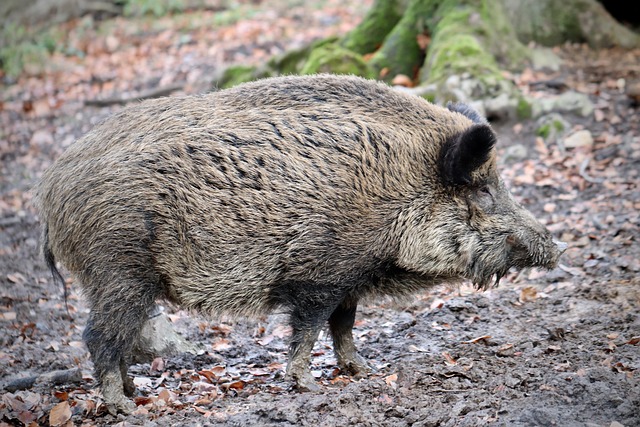Botanical gardens are multifaceted spaces that offer more than just aesthetics; they serve as living museums housing rare plant species, educational hubs for the public, and community gathering places. For families, these gardens provide engaging outdoor activities in scenic, dog-friendly settings, fostering connections to nature from an early age through play areas, trails, and interactive exhibits. Community gardens within botanical havens promote biodiversity, local stewardship, and collaboration, making them popular destinations for all ages and abilities.
Discover the enchanting world of botanical gardens—oases of biodiversity and tranquility nestled in urban landscapes. From their role as havens for plant enthusiasts to their ability to foster community connections, these gardens offer something unique for every visitor. Explore the allure of family-friendly spaces, tranquil nature reserves, captivating scenic landscapes, and thriving community gardens. Additionally, discover how progressive dog-friendly policies enhance accessibility while preserving these green sanctuaries.
- The Allure of Botanical Gardens: A Haven for Plant Enthusiasts
- – Exploring the essence and purpose of botanical gardens.
- Designing Family-Friendly Spaces in Botanical Gardens
- – Creating engaging activities and facilities for children and parents.
- Nature Reserves Within City Limits: Botanical Gardens as Urban Oases
- – The role of these gardens in preserving biodiversity and offering peaceful retreats.
The Allure of Botanical Gardens: A Haven for Plant Enthusiasts

Botanical gardens have long been a haven for plant enthusiasts, offering much more than just a beautiful display of flora. These carefully curated oases serve as living museums, where rare and exotic species are cultivated and preserved, providing an educational experience for visitors. The allure of these gardens lies in their ability to transport people into a world rich in biodiversity, inviting them to appreciate the intricate beauty of nature’s designs.
For families, community gardens offer a fun and engaging outdoor activity, fostering an early connection with the natural world. Many botanical gardens are designed with family-friendly features, such as play areas, educational trails, and interactive exhibits, making them ideal spots for quality time outdoors. Moreover, dog-friendly parks within these gardens allow pet owners to enjoy the scenic landscapes while their furry companions explore freely, adding another layer of appeal to these diverse natural reserves.
– Exploring the essence and purpose of botanical gardens.

Botanical gardens serve as oases of biodiversity and natural beauty within urban and rural landscapes alike. Beyond their aesthetic allure, these havens play a crucial role in conservation efforts, scientific research, and public education. As nature reserves that encompass a vast array of plant species, they offer visitors a chance to immerse themselves in diverse ecosystems and gain a deeper understanding of the interconnectedness of life on Earth.
Family-friendly parks with botanical gardens provide a unique setting for quality time outdoors, fostering connections between generations through exploration and discovery. Many such gardens also cater to dog owners, becoming canine-friendly parks where both pets and their owners can enjoy scenic landscapes while adhering to responsible pet ownership practices. Community gardens within these spaces encourage collaboration and sustainable living, offering residents opportunities to cultivate their own plants and contribute to the overall biodiversity of their surroundings.
Designing Family-Friendly Spaces in Botanical Gardens

Botanical gardens, often nestled within nature reserves and community gardens, offer more than just scenic landscapes; they provide an opportunity to create family-friendly spaces that encourage interaction with plants and foster a love for nature. By incorporating elements that cater to different age groups and abilities, these parks can become vibrant hubs where families spend quality time together while exploring diverse plant species. Think interactive displays, children’s play areas, and even dog-friendly zones to attract a wide range of visitors.
Designing such spaces requires careful planning to balance aesthetics with functionality. Benches, shaded areas, and easy-to-navigate paths ensure comfort for all, especially during longer visits. Engaging features like sensory gardens and educational workshops further enhance the experience, making botanical gardens not just pleasant destinations but also learning environments where families can bond while appreciating the beauty of plants in their various forms.
– Creating engaging activities and facilities for children and parents.

Botanical gardens, known for their stunning displays of plants and scenic landscapes, can become even more enchanting by incorporating family-friendly activities. These attractions offer a unique opportunity to engage both children and adults in the beauty of nature, fostering a deeper connection with the outdoors. Interactive exhibits, educational programs, and play areas designed specifically for younger visitors encourage exploration and curiosity while providing a fun break from traditional garden tours.
Many family-oriented botanical gardens also cater to dog owners, transforming them into vibrant community spaces. Dog-friendly parks allow pet parents to enjoy the tranquility of nature reserves with their four-legged companions, fostering a sense of belonging within the local community. These inclusive spaces not only promote physical activity but also contribute to mental well-being by immersing families and their pets in beautiful, green environments, creating lasting memories amidst the lush greenery of botanical gardens.
Nature Reserves Within City Limits: Botanical Gardens as Urban Oases

Botanical gardens, nestled within city limits, have emerged as urban oases, offering residents and visitors alike a tranquil escape from concrete jungles. These nature reserves, often referred to as community gardens, are more than just pretty landscapes; they serve as vibrant ecosystems that support diverse plant species, enhancing biodiversity. The scenic beauty of these botanical gardens attracts people from all walks of life, providing a peaceful retreat for families, dog owners, and nature enthusiasts alike.
With their carefully curated collections, these parks cater to various interests, from children eager to explore the wonders of plants to dog owners seeking open spaces for their four-legged friends. Family-friendly activities, educational programs, and serene environments make botanical gardens ideal spots for quality time with loved ones. Moreover, they foster a sense of community by bringing people together to appreciate and protect our natural heritage.
– The role of these gardens in preserving biodiversity and offering peaceful retreats.

Botanical gardens play a pivotal role in preserving biodiversity by housing an extensive variety of plant species from different ecosystems. They serve as living libraries, offering researchers and enthusiasts valuable insights into the intricate web of flora. Beyond their academic significance, these lush oases provide peaceful retreats for visitors seeking respite from urban life. With scenic landscapes that span manicured paths to wild, untouched corners, they cater to a diverse range of interests. Family-friendly parks within botanical gardens encourage intergenerational bonding, fostering an early appreciation for nature. Even pet owners can enjoy these green spaces with dog-friendly areas, making them accessible and inclusive for all community members. Community gardens, as part of this botanical haven, also contribute to local biodiversity while promoting environmental stewardship among residents.














